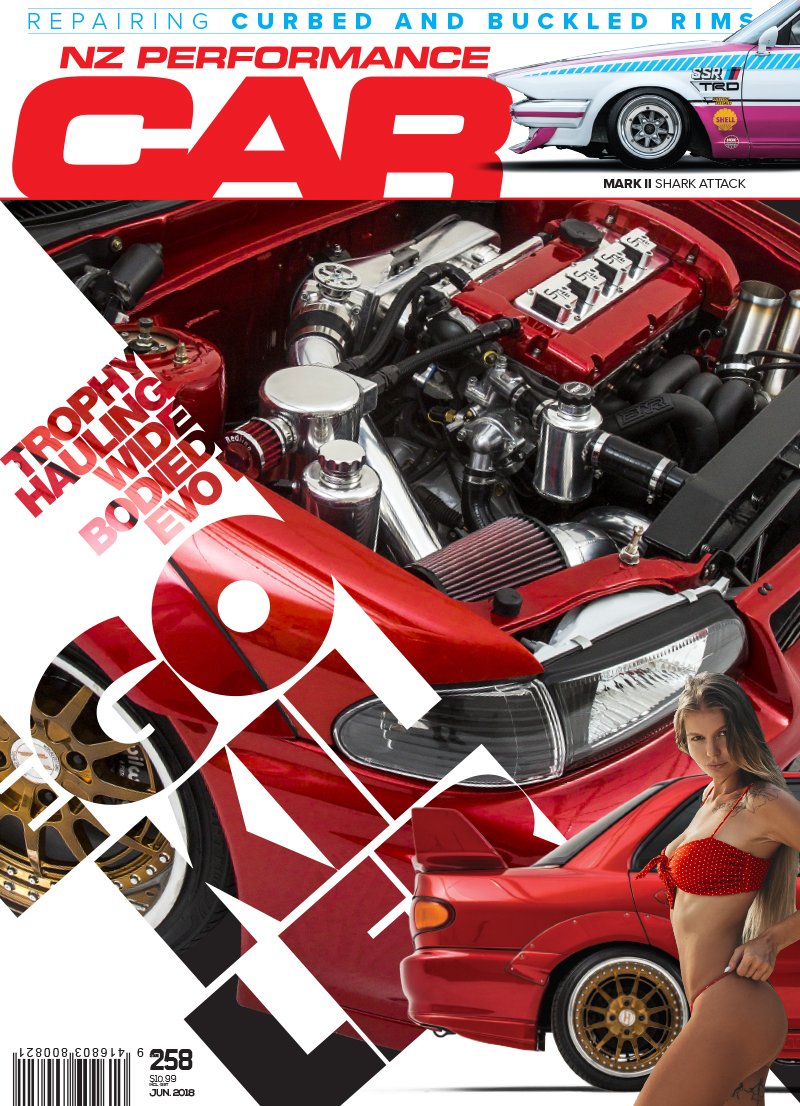While not everyone’s glass of sake, Matt Jordan’s precision take on Japanese style encompasses art, rebellion, and remembering your roots

Art, by its very nature, is divisive. Whichever form it takes, the result is inevitably subjective, with beauty being very much in the eye of the beholder. As the art form deviates from the traditional, approaching the fringes polarizes opinion further. It distances the spectator with a more classical bent and, conversely, attracts a small-but-dedicated core of followers.
Tattooing rrepresents maybe one of the more prominent love-it-or-hate-it art forms. With roots embedded in counter-culture, even today the art form suffers from long-held prejudices, particularly in the mainstream eye. It’s an arguably badass aesthetic, which, of course, has drawn legions of fans, not least Matt Jordan, the owner of possibly the most distinctive 1980s Toyota in the country.

View fullsize
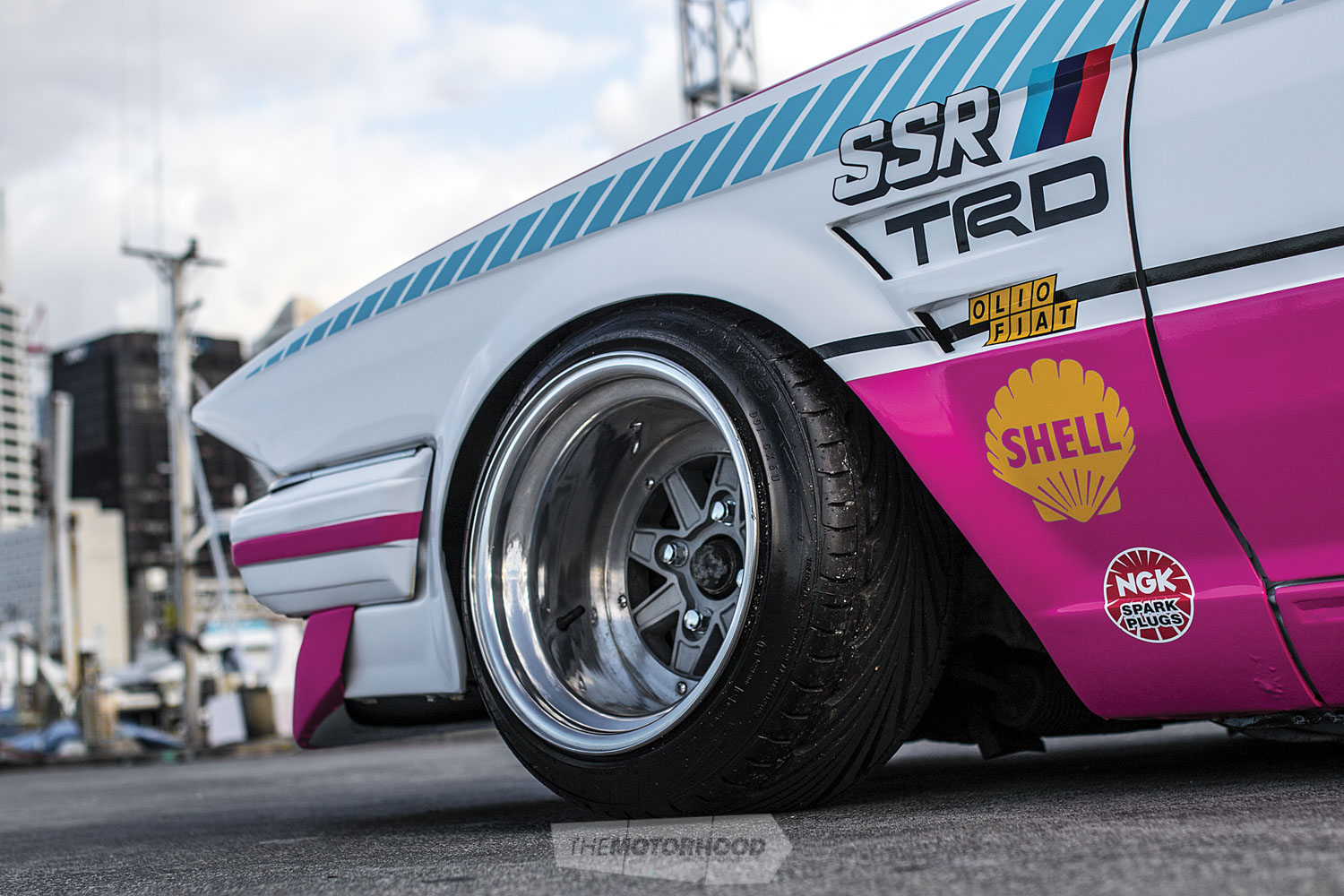
View fullsize
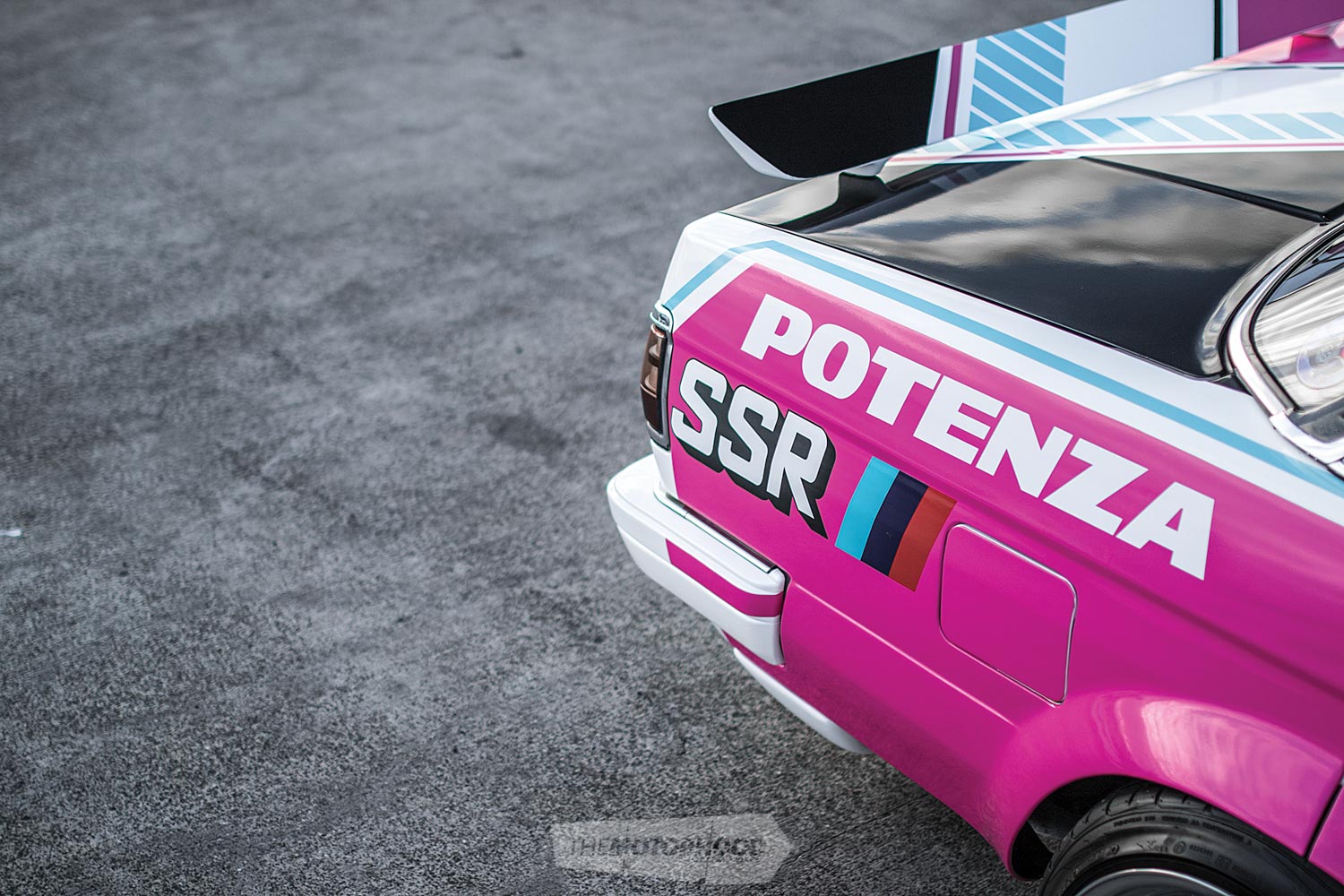
However, Matt’s dedication to the human body as a canvas extends beyond mere enthusiasm. With a reputation built on some of the most realistic body art on the planet, he’s a man of international notoriety and demand. So, when it came time to realize his ’80s automotive goals, the result was hardly going to be a shrinking violet. Beneath the striking bodywork and complex livery lie the bones of a 1987 Toyota Corona Mark II hardtop — chassis code GX71, to be exact. It’s the evolution of a long-held infatuation with the boxy silhouettes of 1980s Toyotas, but the choice of the zokusha styling route draws more parallels with Matt’s day job than first impressions may suggest.
Descendant of the bosozoku subculture, zokusha (or shakotan) style dates back to the 1950s. In a time of rapid and regimented economic expansion, bosozoku was — and still is, albeit on a reduced scale — a symbol of rebellion against a mainstream culture. Disenfranchised and seeking identity, early bosozoku youth turned to tuning motorcycles and, later, cars, in outrageous fashion. Noise, colour, and raucous behaviour exemplified their pursuits. The desired effect kicked in — the mainstream all but disowned bosozoku, and, in some cases, the subculture became a recruiting ground for Yakuza. The style evolved through the years, and, although, in the present day, numbers are on the decline, there’s still a certain kind of reverence held in Japan for these kinds of builds.
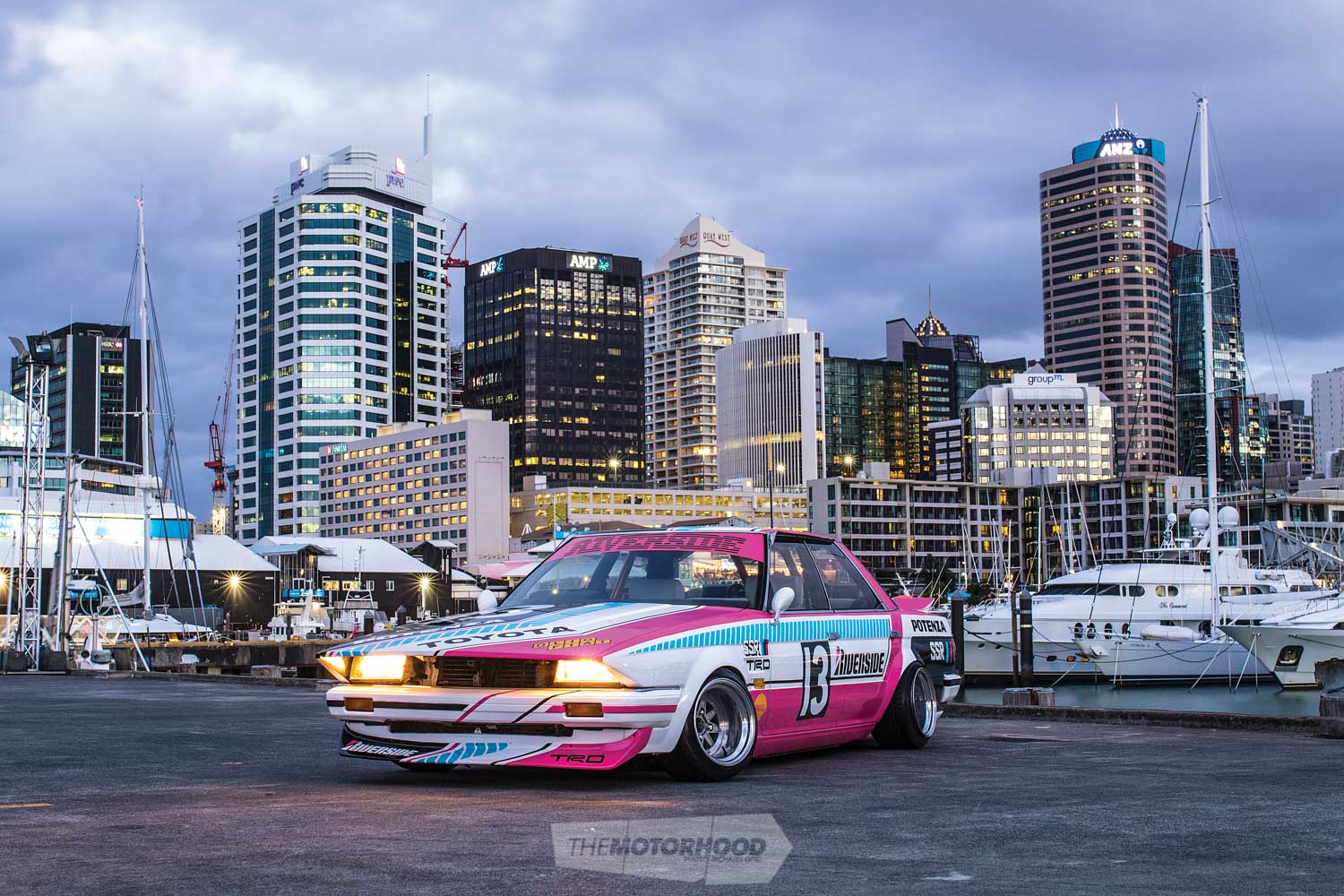
The GX71’s real presence is achieved in motion. The look, the sound, and the ride height all create a hell of a spectacle, whether you love or hate it
For Matt, embarking on something fairly unique on Kiwi shores seemed a natural extension of his devil-may-care younger days on the street. Growing up in Christchurch, with bike-riding parents hammering Brit and Euro two-wheeled hardware, Matt admits that, “bikes maybe scared me a little bit; I saw a few friends have big crashes — I got a bit wary, you know?” Cars maintained an allure, and, among the smattering of gear Matt owned throughout the years, his fondest memories include ’80s Toyotas.
To be exact, KE70 Corollas. Often de-sprung, sometimes sporting completely blacked-out windows thanks to liberal applications of rattle cans, Matt admits that he got into his fair share of trouble behind the wheel of various KE70s. Doing skids, speeding, and other driving violations saw the fines rack up. Not that it mattered; Matt and his mates would get back in the driver’s seat and tear up the Christchurch streets regardless of authority. Reaching a heady peak with 7A-GTE power, eventually, the KE70 fascination would prove the genesis for the ultimate anti-mainstream Toyota statement.
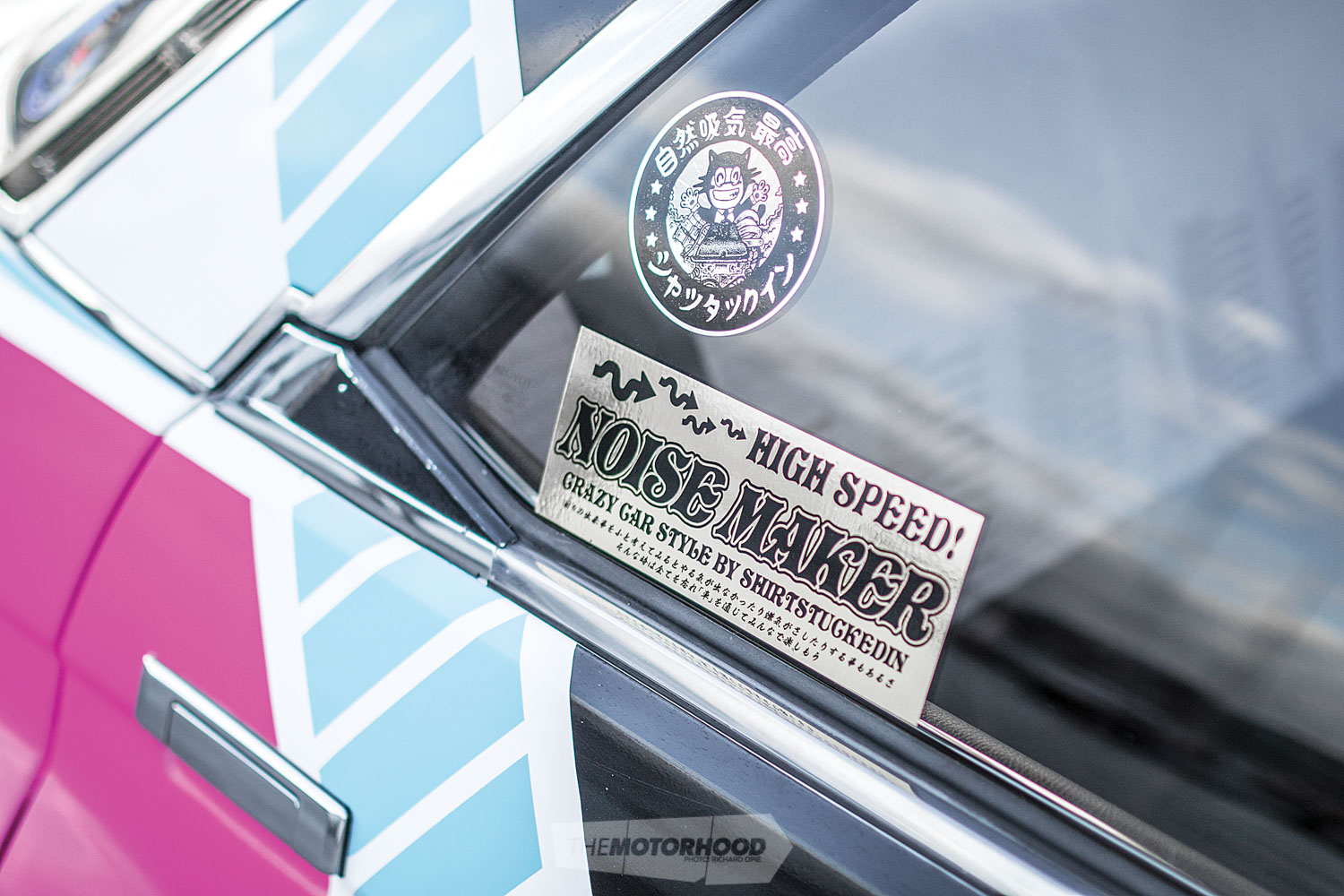
View fullsize
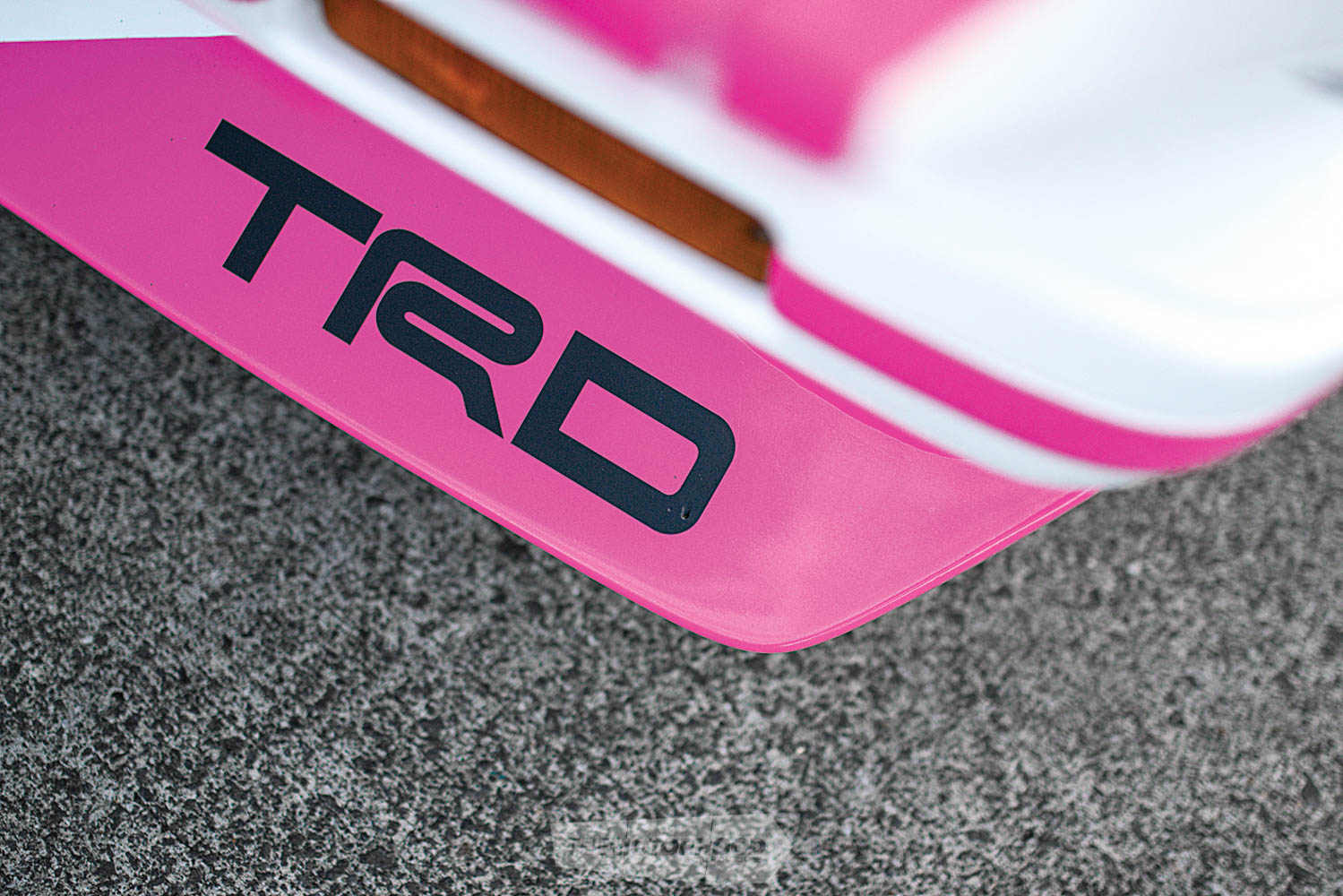
View fullsize
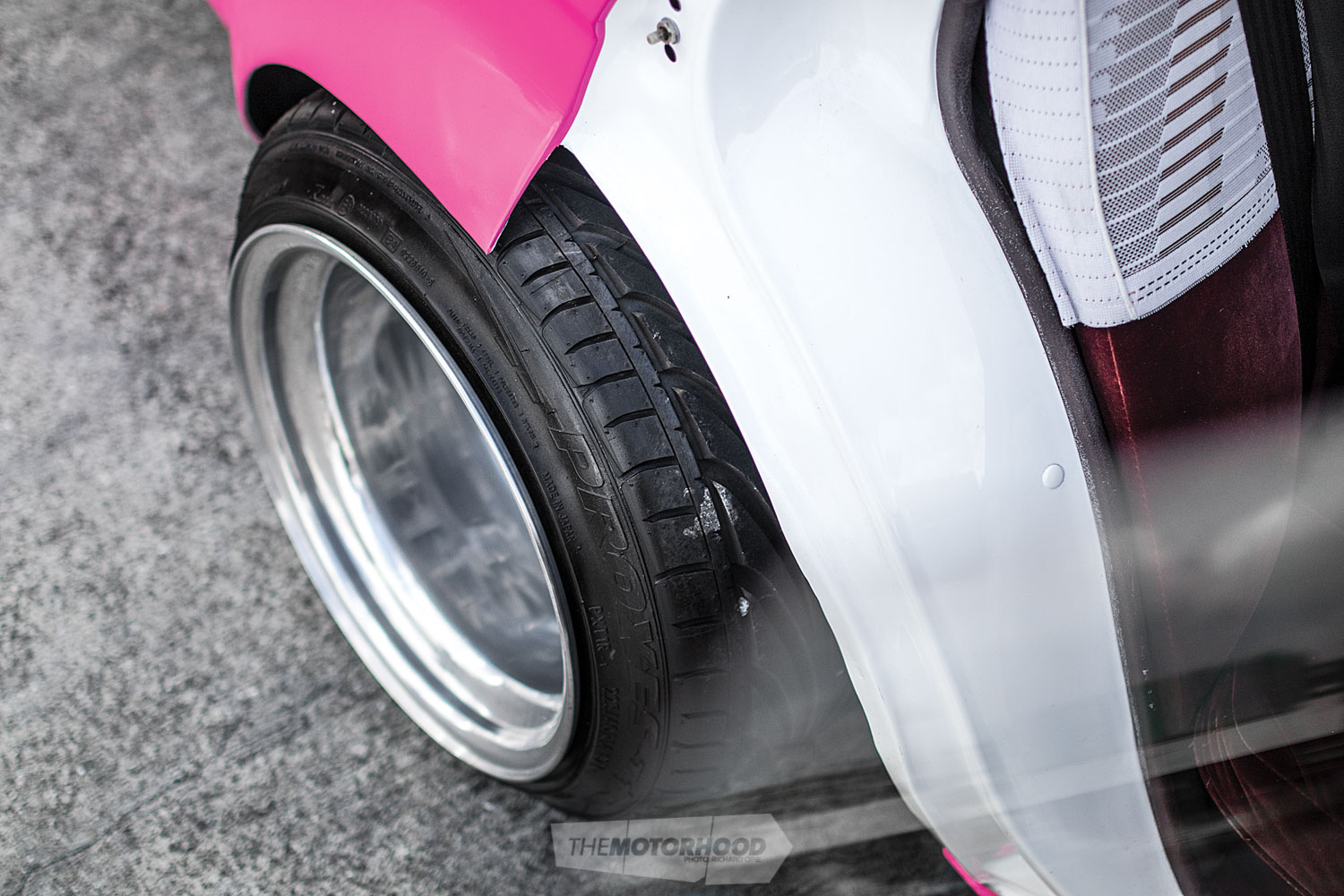
View fullsize
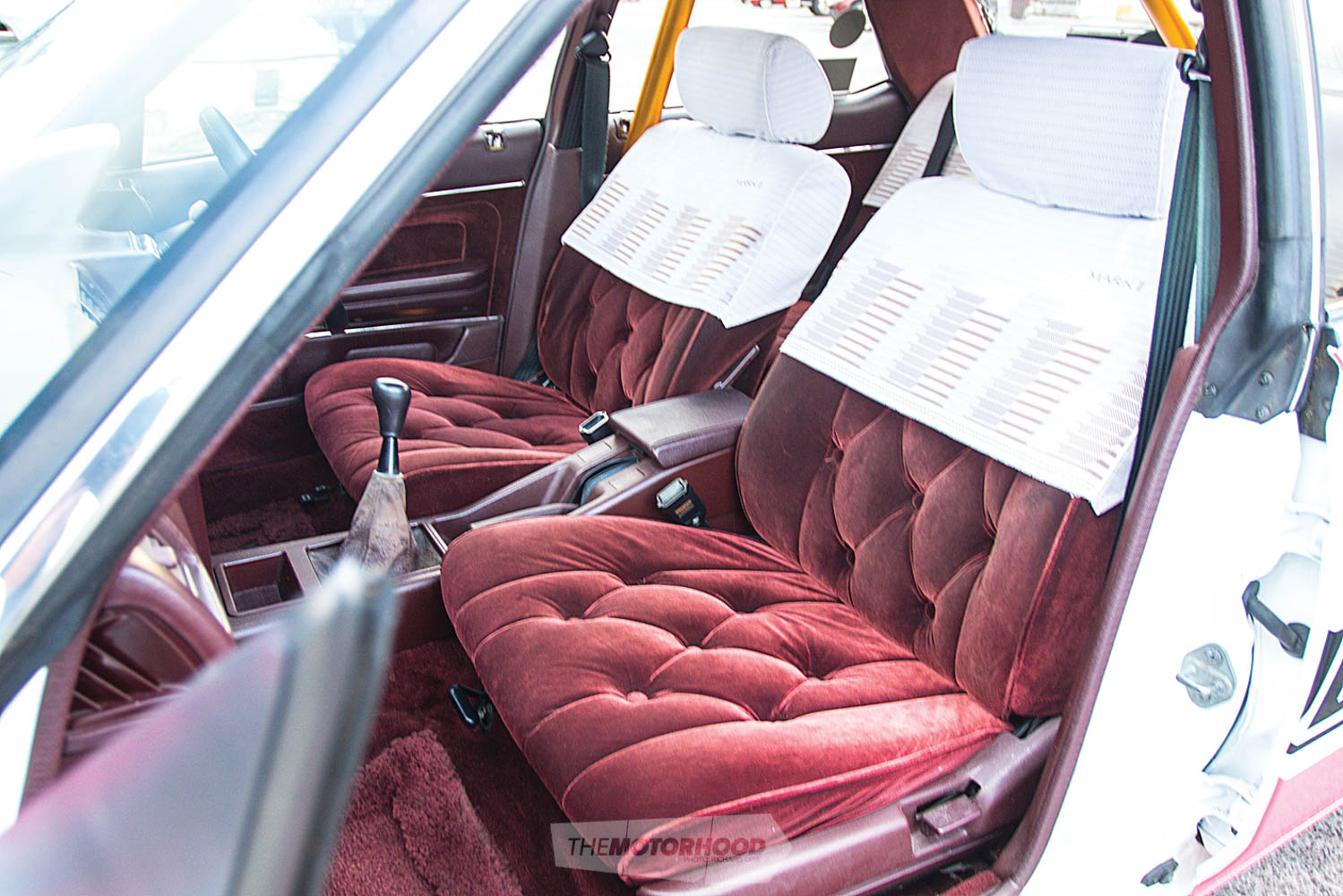
View fullsize
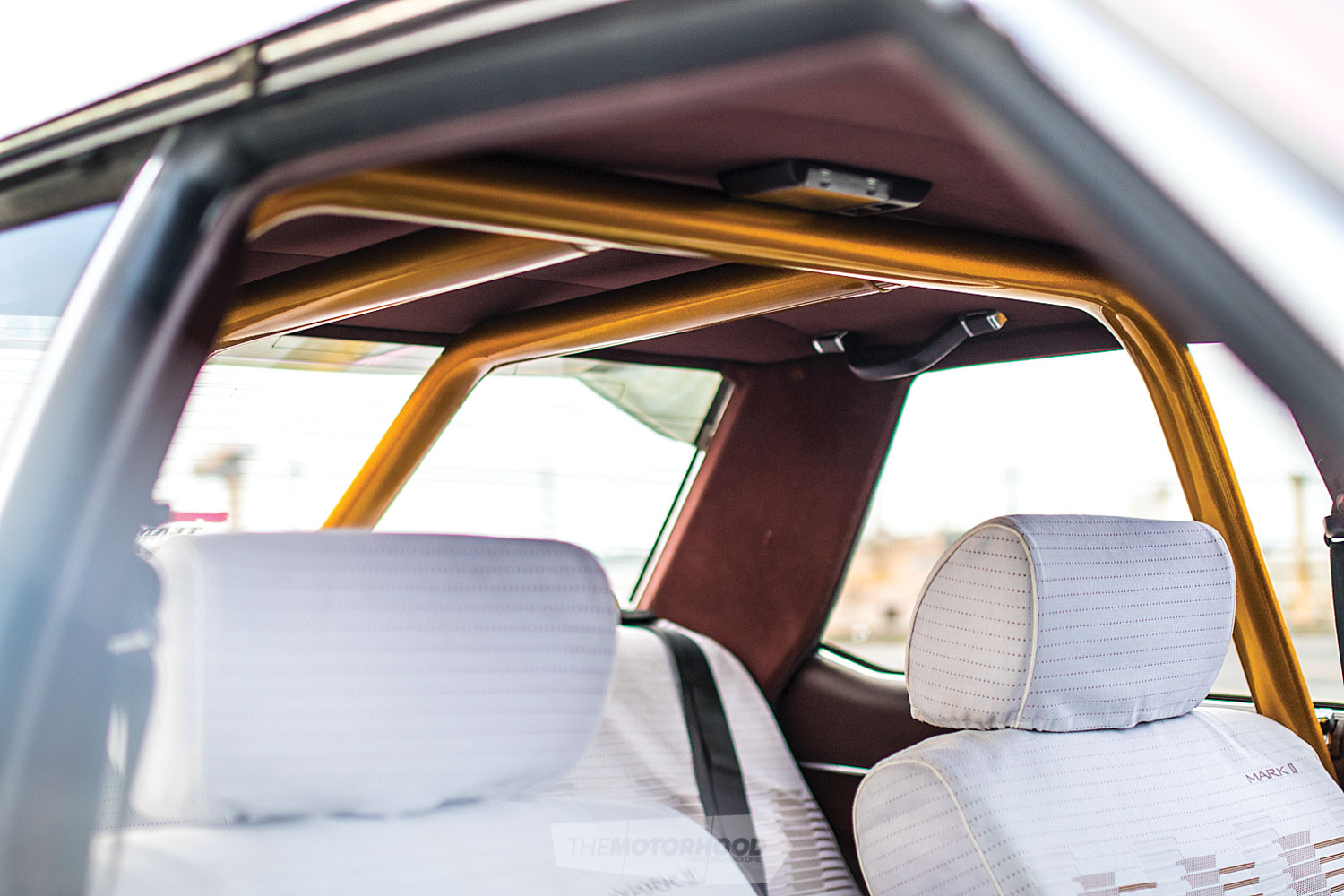
Inside the GX71 is ’80s Japanese comfort with the shakotan twist. Buttoned velour, electronic gadgets, and shagpile carpet mingle with the mandatory bright half-cage, Nardi wheel, and iconic Pioneer audio components
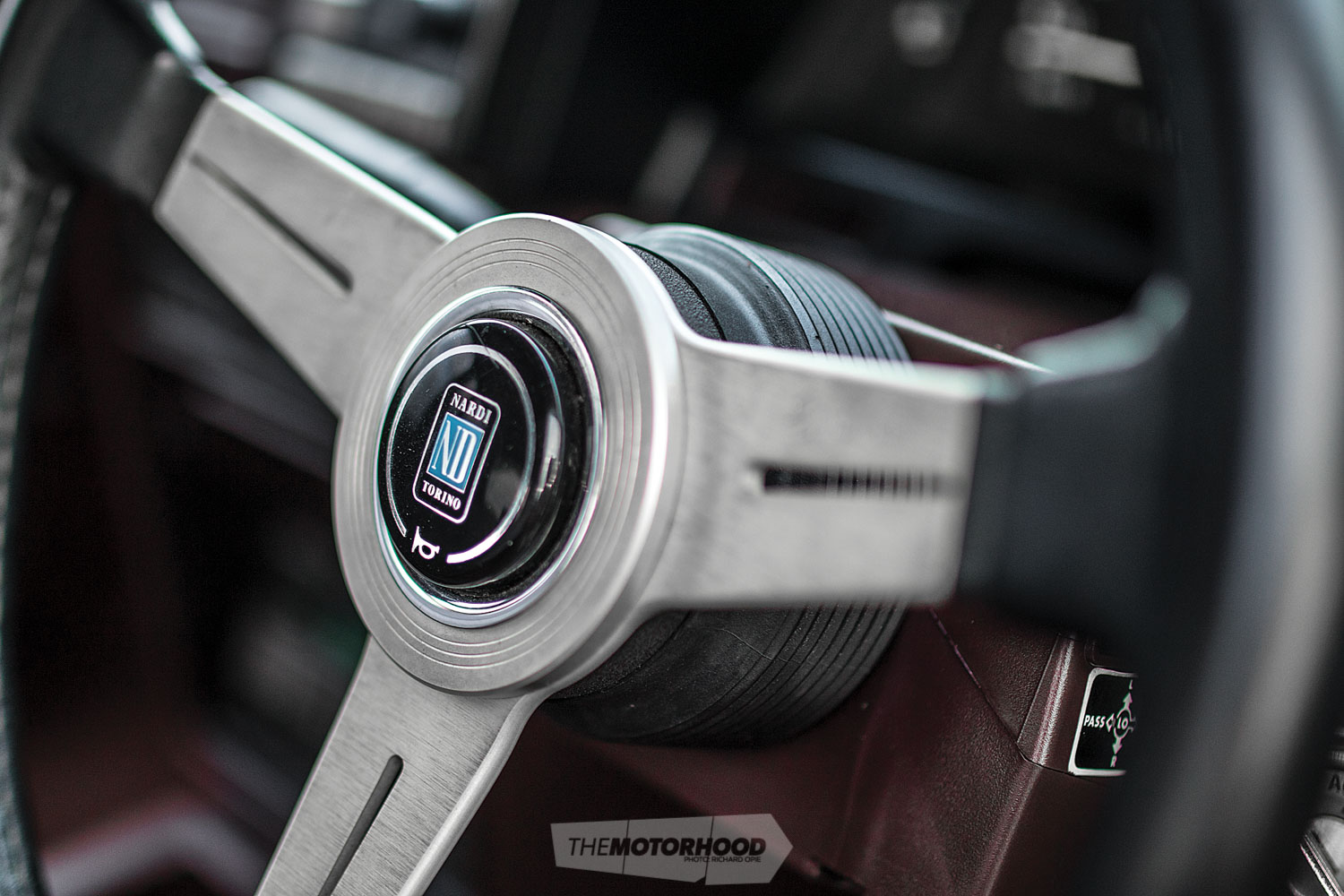
The drive to create his own shakotan Toyota began only five or six years ago. The blame lies solely in the hands of the internet, sites like Shirtstuckedin, Hightopfade, and New Zealand’s own Riverside enlightening Matt as to the unique treatment of these otherwise-stodgy three-box sedans. Of course, there were varying degrees of extreme, from the kaido racers sprouting skyscraping exhausts and bulging boxed fenders to the more sympathetic kyusha guys running stock bodies with sets of nice wheels.
Funnily enough, the kyusha route was followed by the Toyota’s previous owner. Matt recounts the day that he was handed the keys: “The owner was really keen to make sure [that] I was going to look after the car. He told me how rare it was and even rarer to find in clean condition.” Soon enough, Matt was buckled into the luxury of deep-buttoned maroon velour, and the Mark II hardtop’s journey to rebellion had begun.

It wasn’t exactly uncool, sitting low-ish on a set of 15-inch SSR Reverse Mesh wheels, but greater things lay in the pipeline, and the must-have shark-nose bonnet was at the top of the list. Through exhaustive internet research, Matt settled on a top three, comprising all of the elements needed to concoct his shakotan recipe. The method called for a sprinkling of audacity with a dash of restraint. But, first, in true shakotan style, the right wheels had to be sourced.
Trade Me to the rescue, and an abandoned Mazda RX-3 project giving up a set of SSR Mark IIIs came to light. Originally specified to fill Katayama flares, Matt deemed the 14×10.5-inch front and 14×11-inch rear staggered combo an ambitious yet ideal fitment. In a textbook case of building the car around the wheels, the SSRs were duly bolted on and the GX71 slammed to 10mm off the ground courtesy of a bespoke set of coilovers by Kyrie at Quest Fabrication.
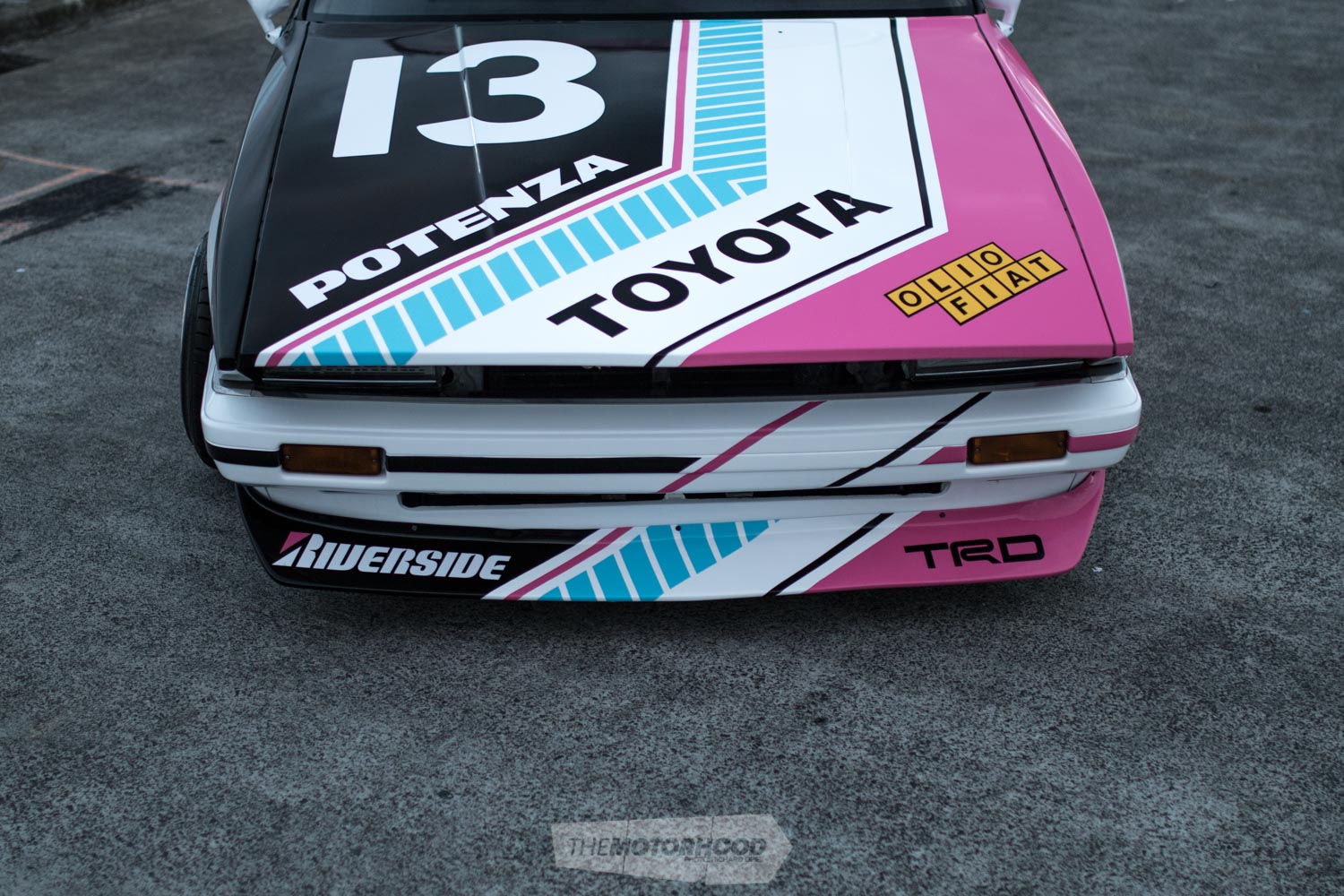
Achieving the right stance was paramount. Here, Kyrie came to the rescue again, massaging the engine-bay sheet metal and shifting the strut tops inwards, gaining crucial negative camber to pull the tops of the behemoth Mark IIIs inwards. In anticipation of some low-down cruising, a custom twin two-inch straight-through exhaust was tucked up snug against the floor. Even though the Mark II retains all 75kW of its stock single-cam two-litre 1G-E six-cylinder, the twin tips spit the calling cackle of the shakotan faithful. It’s obnoxiously perfect.
With the Mark II sitting where it should, Matt’s attention turned to getting the styling just right.
In Japan, these sorts of builds are often a hastily slapped together affair, designed for a couple of seasons of cruising before being consigned to the scrapyard. Matt’s example, like his artwork, is destined for permanence, so the sheet-metal modifications required that expert touch. While craftsman steel work is hardly common in this day and age, Matt identified a handful of hot rod workshops that could possibly complete the work, but then wondered if they would really ‘get it’.
View fullsize

View fullsize
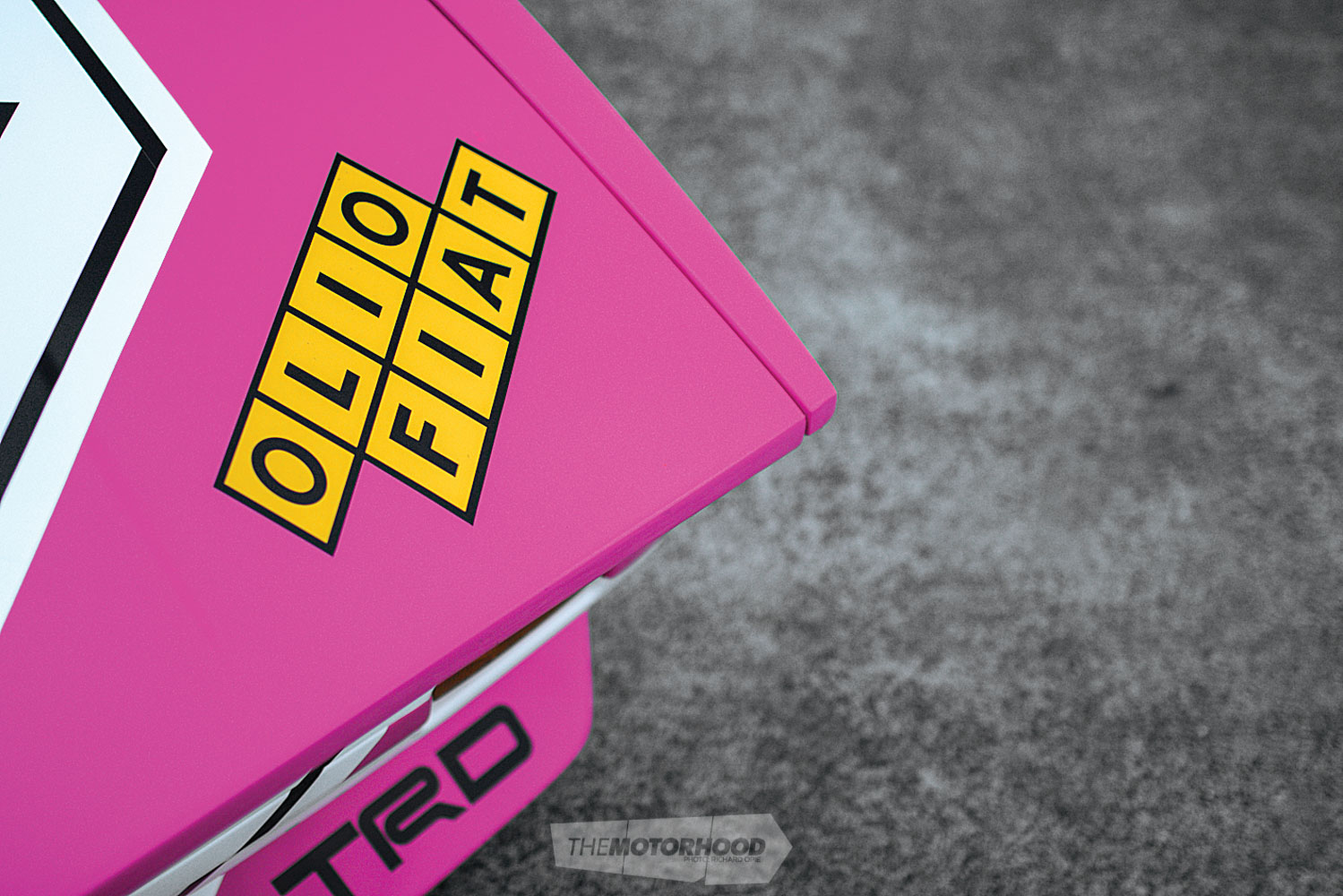
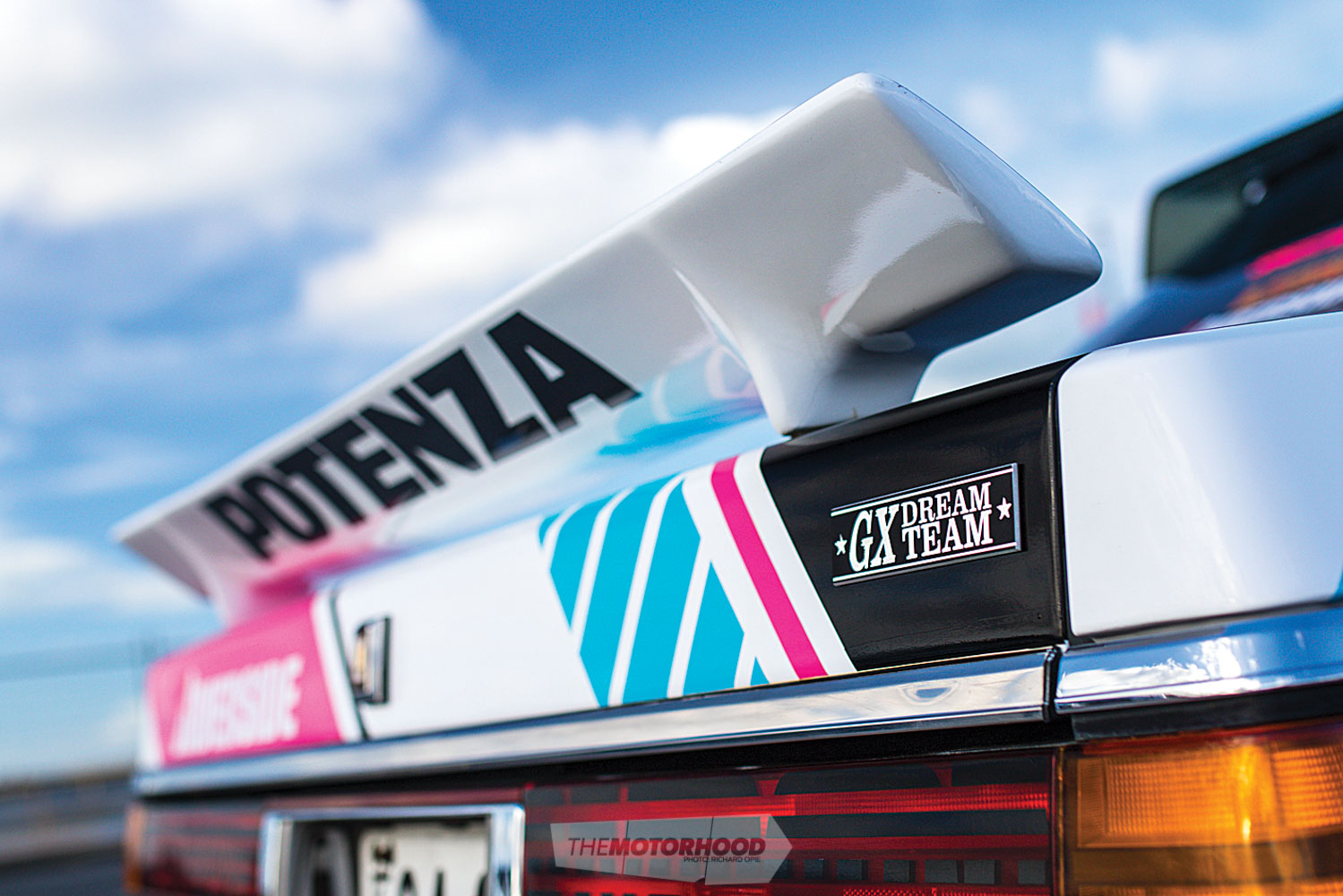
Enter the team at GT Refinishers. Grant’s no stranger to these pages, having carved a solid reputation for his steel widebodies and show-car paint. When Matt rocked up to discuss his plans, Grant immediately got on board. “He was pumped, keen to tackle something a bit out of the box and give it a go,” Matt explains.
Matt’s criteria for the long nose was straightforward: the extension absolutely had to flow seamlessly into the existing bonnet line. No kinks, no bends. It appears simple, but the swage lines running along the flanks and into the extension, the raised centre section of the bonnet, and the perfectly formed return along the pointed front edge represent hours of welding, cutting, and beating the metal into shape.
The difficulties didn’t stop there. Covering the Mark II’s girth required the fabrication of steel arches, and Matt admits that he may have been a little painful to deal with during this part of the project. Getting the aesthetic just right meant several attempts, with the brief calling for a short radius but wide width.
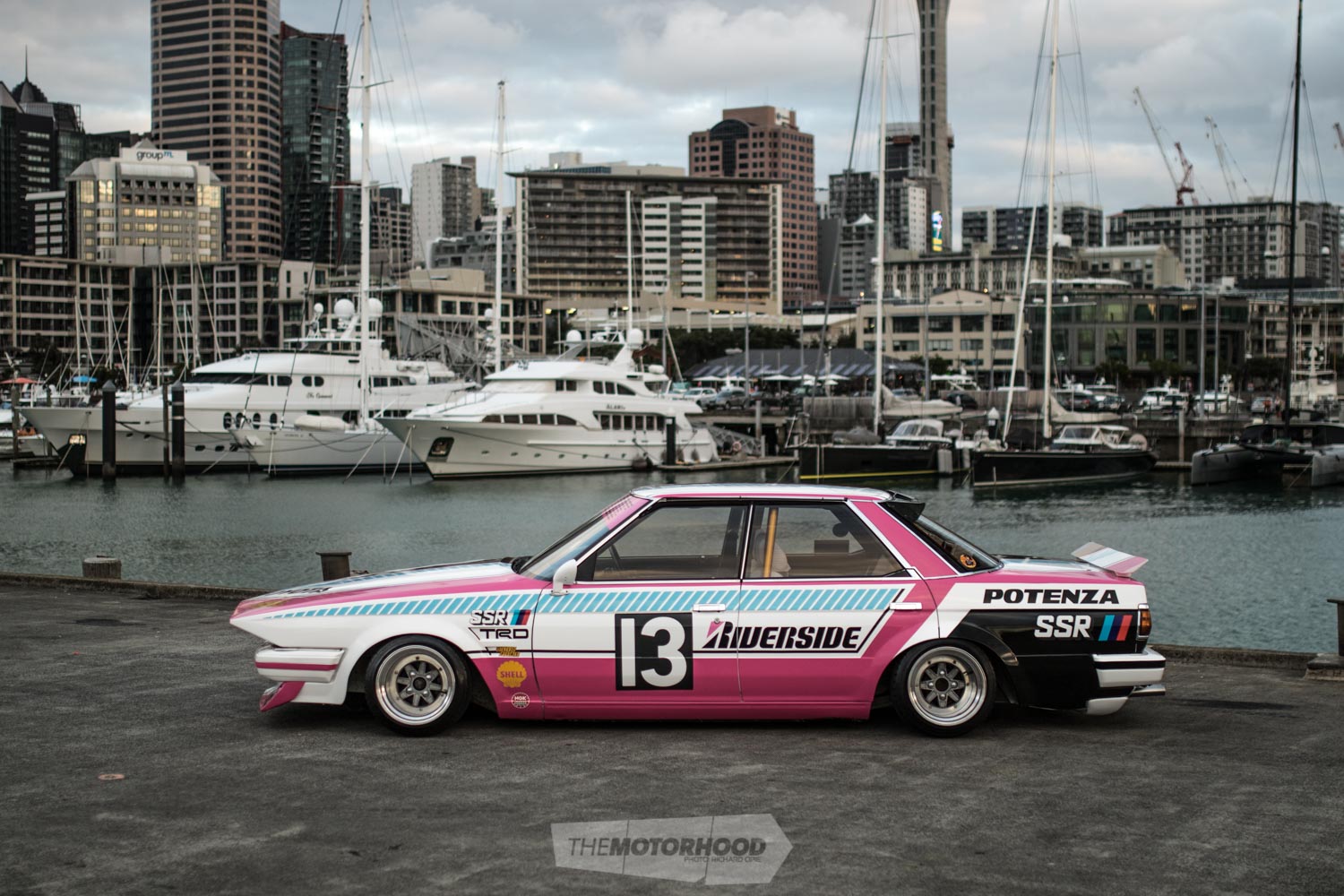
No self-respecting zokusha kid would be caught dead with dud wheels. Matt’s GX71 features an impressive set of SSR Mark IIIs, taken to the extreme with 14×10.5-inch front and 11-inch rear sizing
Of course, there’s the small matter of that livery to consider, too. Following a spray of stark white by mate Callum Winders and the prospect of an unveiling looming at the 2018 V 4&Rotary Nationals, Matt turned his artistic talents to the exterior design. With a few inspirations, including a particular Bridgestone-liveried car, Matt settled on his design brief.
One-third light, one-third dark, and one-third mid tones, avoiding, as he puts it, a “clusterf**k of colours like so many cars [that] I saw in pictures from Japan. It needed to be wild, but a bit restrained”. Red, black, and white was the starting theme, but the resulting baby blue–with–pink ensemble presents in striking asymmetric fashion. “It was great designing each side differently; it was like designing the same car twice!” he says. Coupled with the essential sponsor logos, the aesthetic wouldn’t look out of place on the streets of the motherland.
View fullsize
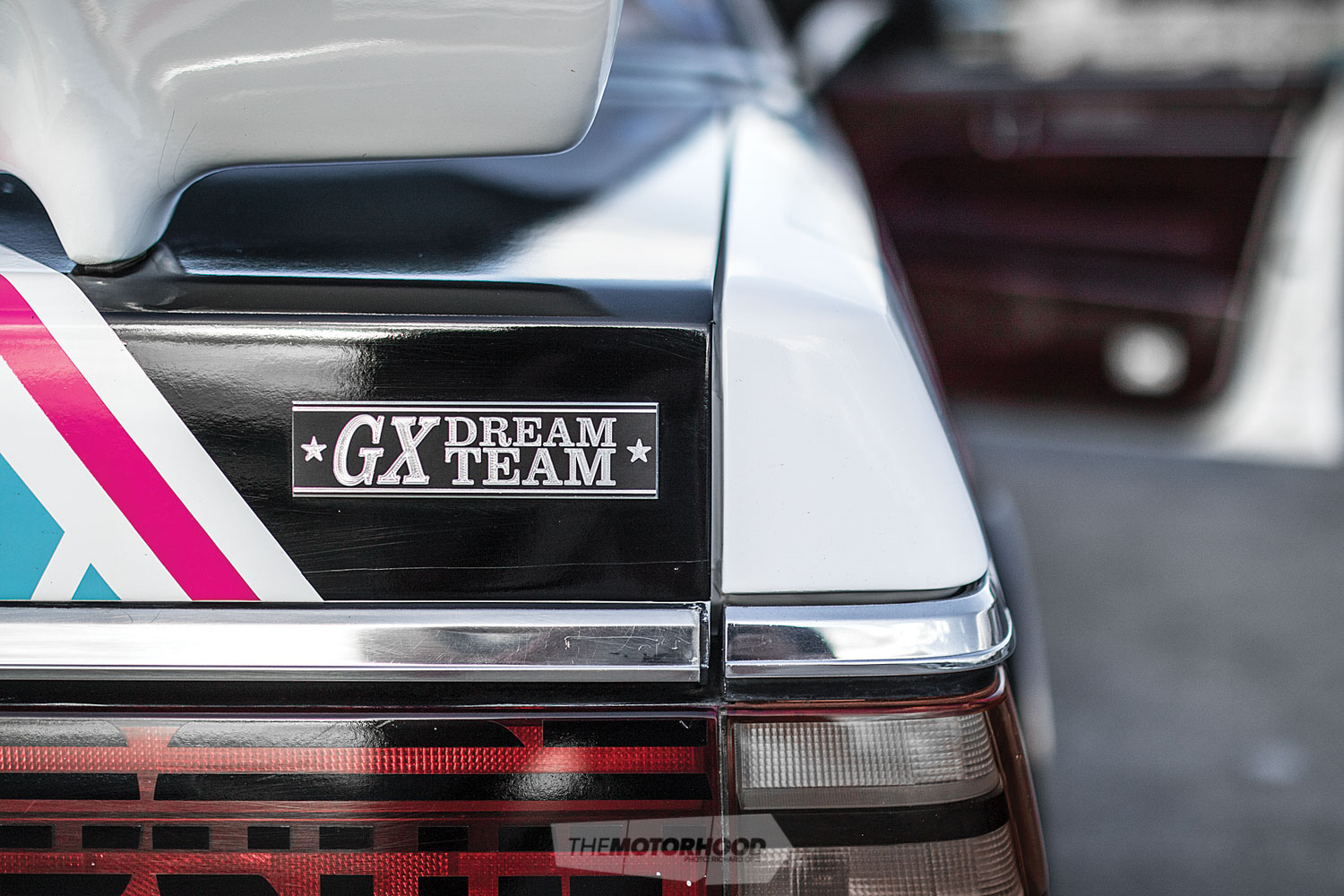
View fullsize
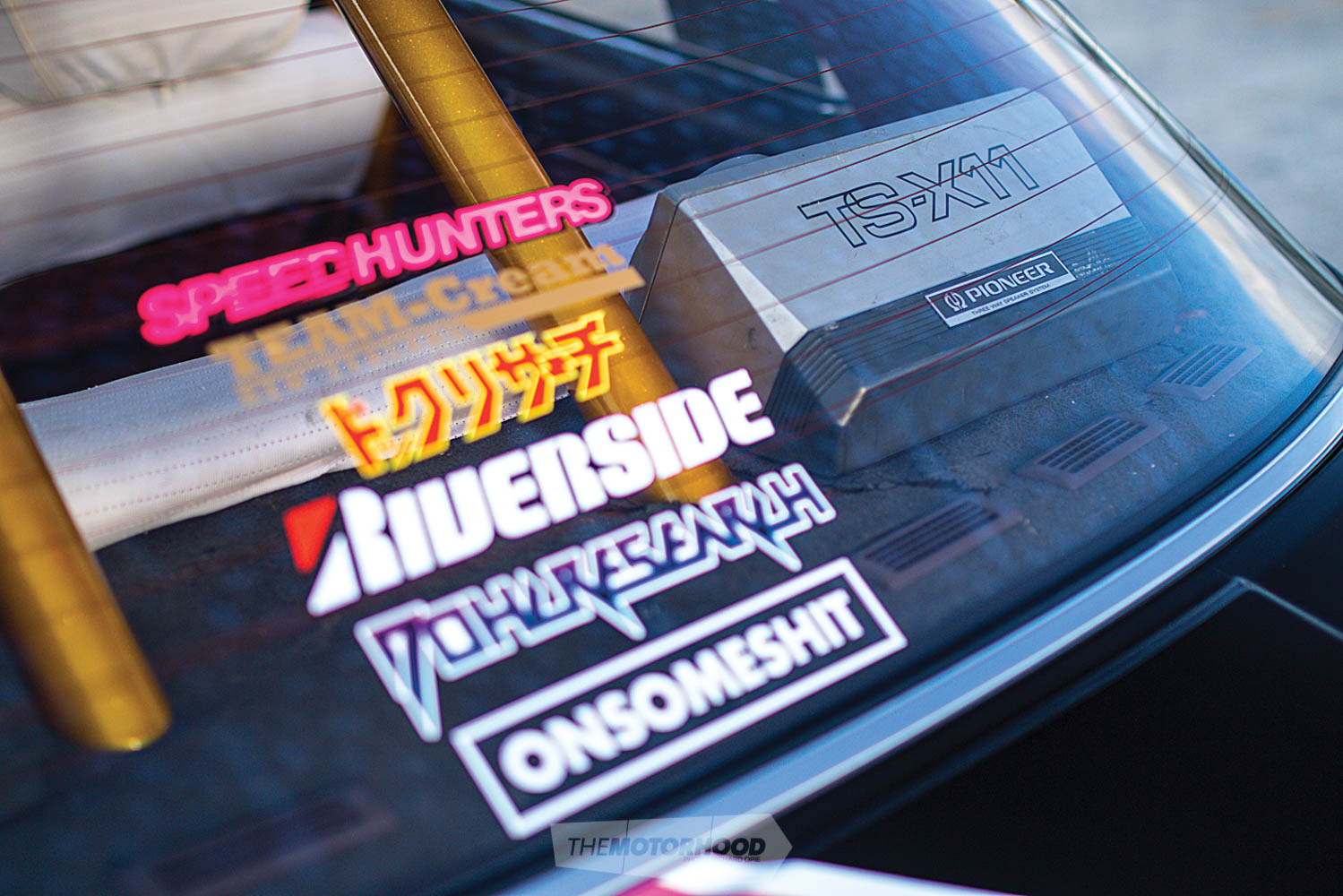
But the story isn’t over. Currently, the Mark II is kind of a paperweight, being outside the realms of legality, too loud, too low, and too wild. The ultimate plan is to bring the car to cert standards, maybe with airbags and slightly more sensibly sized wheels and a more subtle frontal treatment. The dependable 1G may also get the boot in favour of a high-strung naturally aspirated 2JZ build.
An artist’s work is ever evolving, ever improving. As long as Matt’s Toyota serves as his automotive canvas, it, too, will continue to unfold, polarizing opinion and serving as a beacon not to forget those rebellious roots of years past.
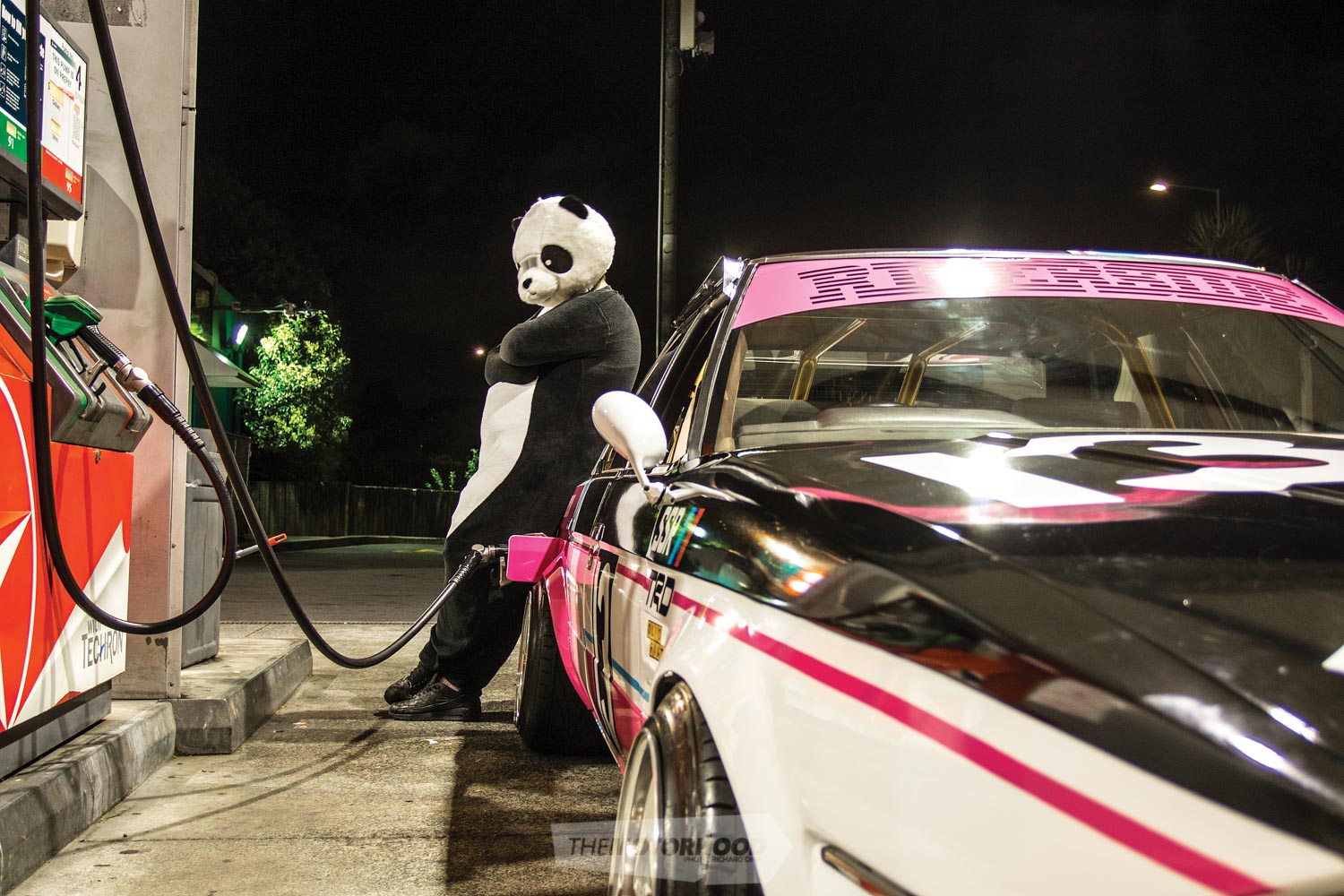
DRIVER PROFILE
DIVER/OWNER: Matt Jordan
AGE: 32
LOCATION: Auckland
OCCUPATION: Tattoo artist
THANKS: Callum Winders; Zeb; the Riverside team; GT Refinishers; Kyrie and Colin at Quest Fabrication; Richy; Mike Squire; my wife, for letting me throw money into the fire; and anyone else for being tolerant with me
Is it legal? No way. Is it cool? Hell yeah. The all-steel shark-nose front end transforms mundane into madness, with reactions ranging from “What?”, “Why?”, and “How?” to “Rad!”
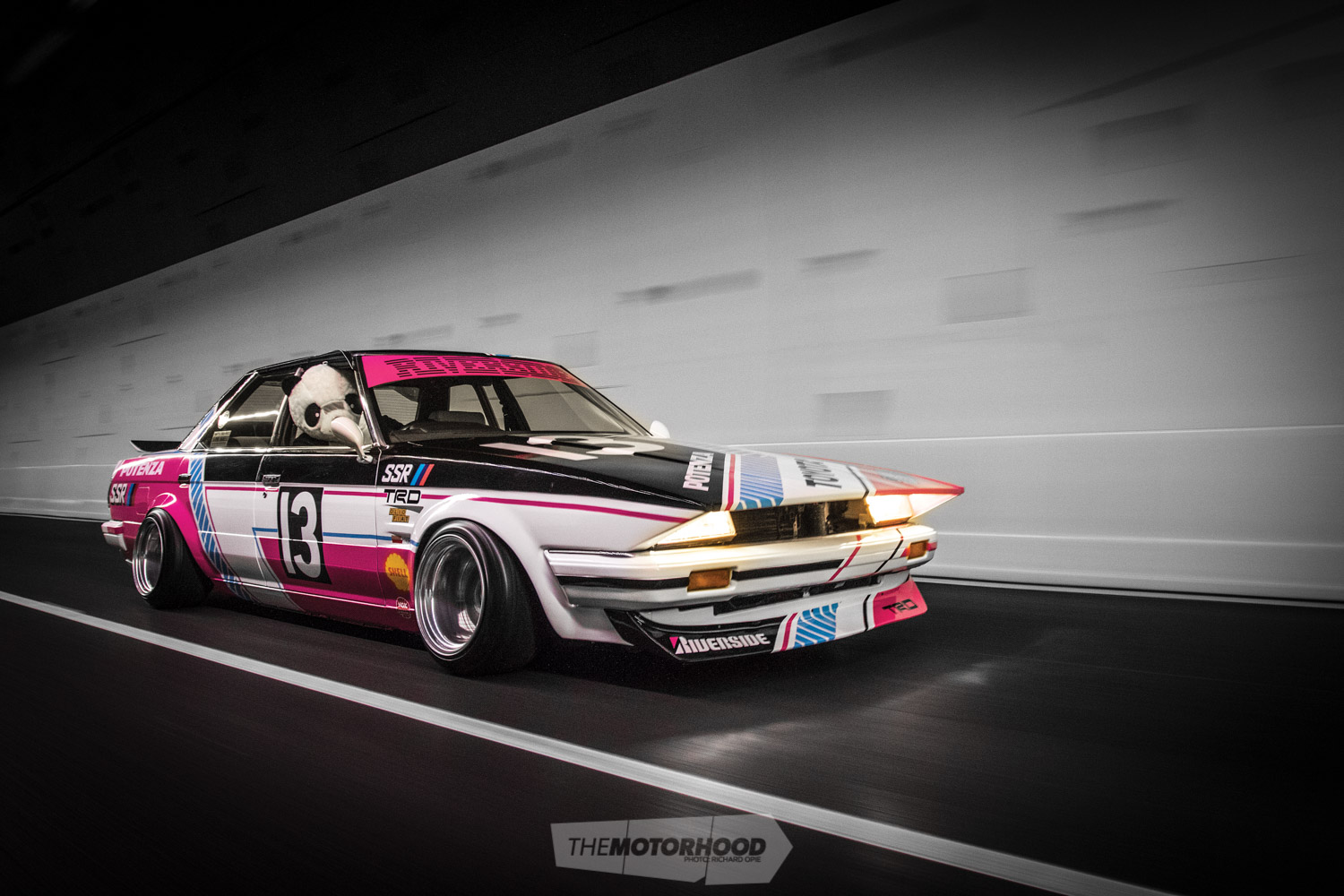
Heart
ENGINE: Toyota 1G-EU, 2000cc, straight-six
BLOCK: Factory
HEAD: Very tired
INTAKE: Factory
EXHAUST: Custom Quest Fabrication two-inch straight-through
FUEL: Factory
IGNITION: Factory
ECU: Factory
COOLING: Factory
EXTRA: Dirty with some scary wiring additions
Driveline
GEARBOX: Toyota W57, five-speed
CLUTCH: Slipping
FLYWHEEL: Factory
DIFF: Noisy
Support
STRUTS: Custom Quest Fabrication coilovers
BRAKES: Not really
EXTRA: Modified strut towers, 5mm steel chassis caps
Exterior
PAINT: 2K white by Callum Winders
ENHANCEMENTS: Custom steel front and rear guards by GT Refinishers, custom steel long nose by GT Refinishers, chin spoiler, rear ducktail, rear splitter, livery by Harrier Signs
Interior
SEATS: (F) Fancy burgundy button-down velour (rumoured to have been the original inspiration for Will Ferrell’s Ron Burgundy character)
STEERING WHEEL: 360mm Nardi Classic
INSTRUMENTATION: Many fancy factory gauges and meters, fancy factory thermometer
ICE: Hidden Pioneer head unit, Pioneer TS-X11 parcel-shelf speakers
EXTRA: Extremely fancy factory seat doilies and shagpile floor mats
Performance
POWER: Maybe 75kW
This article originally appeared in NZ Performance Car issue No. 258 — click the cover below to get your grubby hands on a copy
